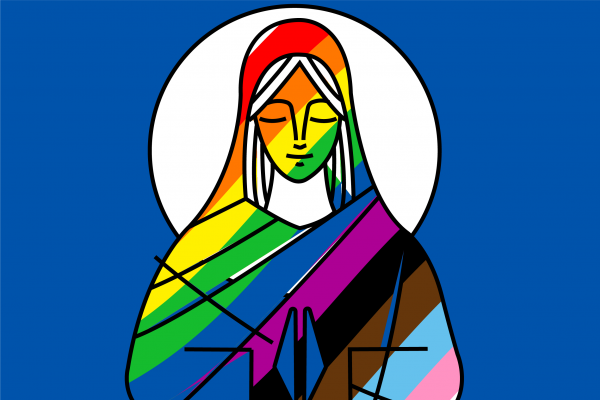Jun 16, 2023
Although the Roman Catholic Church might disagree with me, my Catholic faith revolves not around a man but rather a woman. Her hair is covered in an opaque veil; she wears a long white gown under a blue mantle. Her hands are outstretched and rays of light radiate from her fingertips, pouring down at her sides. Her name is Mary, mother of God, and within her rests the fulcrum of my queer Catholic joy and trauma.
Read the Full Article

Already a subscriber? Login
